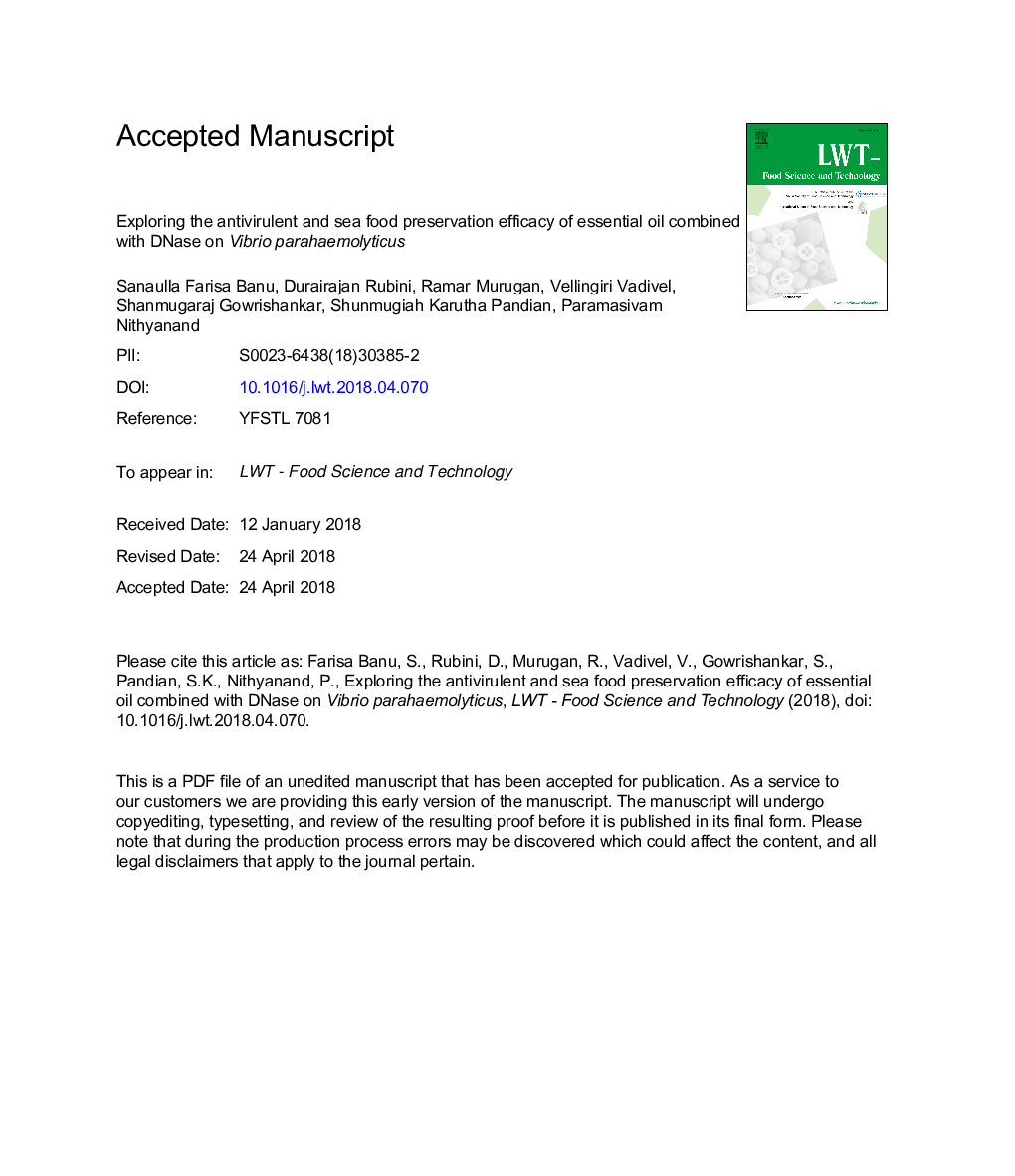| Article ID | Journal | Published Year | Pages | File Type |
|---|---|---|---|---|
| 8890896 | LWT - Food Science and Technology | 2018 | 40 Pages |
Abstract
Vibrio parahaemolyticus is a predominant aquaculture pathogen causing food borne infections through the consumption of raw or undercooked sea foods. Biofilm formation and quorum sensing mediated virulence factors play a pivotal role in mediating these infections. The present study evaluates the antibiofilm and anti-quorum sensing potential of an unexplored essential oil (EO) and its major compounds (cinnamaldehyde and linalool) against V. parahaemolyticus. Furthermore, the synergistic effects of the EO along with a commercial available DNase I and marine bacterial DNase (MBD) were explored for its antibiofilm efficacy. In addition, the food preservative efficacy of linalool and cinnamaldehyde were evaluated in prawns (a sea-food model) infected with V. parahaemolyticus stored at 28â¯Â°C and 4â¯Â°C. The treated prawns showed reduced bacterial load and exhibited minimum lipid peroxidation. Scanning Electron Microscopy (SEM) revealed the intact muscle tissues of the treated samples which indicate that the EO components did not damage the prawn tissues. The results revealed that the individual EO components has good efficacy equal to that of the standard food preservative sodium benzoate. This study shows that the synergistic action of EO and DNases might offer an alternate strategy for sea food preservation.
Keywords
Related Topics
Life Sciences
Agricultural and Biological Sciences
Food Science
Authors
Sanaulla Farisa Banu, Durairajan Rubini, Ramar Murugan, Vellingiri Vadivel, Shanmugaraj Gowrishankar, Shunmugiah Karutha Pandian, Paramasivam Nithyanand,
